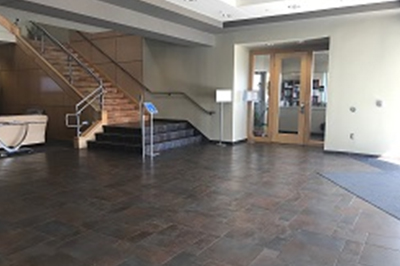Movement and Circulation
Movement and Circulation
Circulation
Circulation and movement path designed in the school building.
From the supporting literature (linked), schools should be designed in a way to control students movement, behavior, and safety. enough space for movement pattern, flexible classrooms, progressing technologies, and sustainable interior materials should be provided.
One of the main elements identified to influence student outcomes is movement and circulation.
Interior Corridors (IC)
Level of Crowding in corridors connecting classroom during class change time.
From the supporting literature (linked above), hallways and corridors as an example of circulation spaces are one of the factors impacting students. It is important that hallways leading to classrooms are not crowded at any point in time, either because of hallways’ size or time of use. Thre should always be free movement in the hallways, and with clear directions.
Proximity to Spaces (PtS)
Distances between classroom to the bathroom and water fountain.
References
1. Earthman, G. I., & Lemasters, L. K. (1997). Can Research Findings Help School Systems Obtain the Most Bang from the Construction Bucks?.
2. Filardo, M. (2016). State of Our Schools: America’s K–12 Facilities 2016. Washington, DC: 21st Century School Fund.
3. Fisher, K. (2001). Building Better Outcomes: The Impact of School Infrastructure on Student Outcomes and Behavior. Schooling Issues Digest.
4. Hughes, S. M. (2005). The relationship between school design variables and student achievement in a large urban Texas school district (Doctoral dissertation).
5. Lumpkin, R. B., Goodwin Jr, R. T., Hope, W. C., & Lutfi, G. (2014). Code compliant school buildings boost student achievement. SAGE Open, 4(4), 2158244014556993.
6. Smith, T. M., Rogers, G. T., Alsalam, B., Perle, M., Mahoney, R., & Martin, V. (1994). The condition of education. Department of Education.
7. Tanner, C. K. (2008). Explaining relationships among student outcomes and the school’s physical environment. Journal of Advanced Academics, 19(3), 444-471.
8. Tanner, C. K. (2009). Effects of school design on student outcomes. Journal of Educational Administration, 47(3), 381-399.
9. Tanner, C. K. (2013). A case for schoolhouse aesthetics. Educational Planning, 21(1), 32-38.
10. Tanner, C. K. (2014). Green School Characteristics, Sustainability, and Student Learning. Marketing the Green School: Form, Function, and the Future: Form, Function, and the Future, 25.
11. Yarbrough, K. A. (2001). The Relationship of School Design to Academic Achievement of Elementary School Children.







